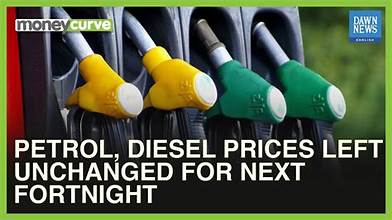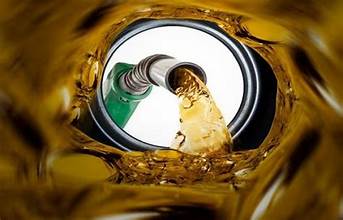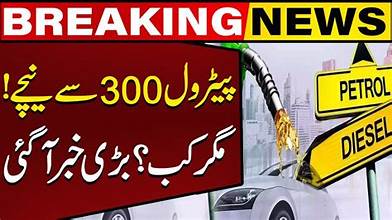In a move aimed at balancing economic pressures and consumer relief, the Government of Pakistan has unveiled revised petrol and diesel prices effective from August 1, 2025, for the upcoming fortnight. These adjustments come amid volatile global oil markets and currency fluctuations, triggering mixed reactions across households, industries, and transport sectors.
🚗 What’s Changed?
- Petrol (Super): Reduced by Rs 7.54 per litre, bringing the new rate to Rs 264.61, down from Rs 272.15. (Profit)
- High‑Speed Diesel (HSD): Increased by Rs 1.48 per litre, rising to Rs 285.83, up from Rs 284.35. (Profit)
These changes reflect a recalibration after the previous fortnight’s hikes—fuel prices may now offer moderate relief to petrol vehicle owners, while diesel‑dependent sectors face additional costs.
📊 Why the Adjustments?
Pakistan’s fuel prices are adjusted biweekly based on three primary factors:
- Global oil price trends—which have seen recent declines, helping permit a petrol rollback.
- Exchange rate movements, as depreciation puts upward pressure on imported fuel costs.
- Recommendations from OGRA (Oil and Gas Regulatory Authority) and relevant ministries, submitted to the Finance Division. (Arab News, The Express Tribune, Profit)

🏡 What It Means for Consumers
For Petrol Users:
Motorbike and small-car owners—among lower- and middle-income segments—get a modest win through the petrol reduction. Daily commuters relying on petrol can expect minor respite in transportation costs and fuel budgeting over the next two weeks.
For Diesel Consumers:
Despite the slight diesel price uptick, transporters, agricultural users, and goods haulers already face mounting pressure. Diesel fuels trucks, buses, and farm machinery (e.g. tractors and tube wells), making even small price changes inflationary. The modest hike may cascade into higher costs across logistics and consumer goods. (Pakwheels, Geo TV)
⚙️ Impact on Industry and Economy
Inflation Trends:
Fuel prices directly feed into inflation: diesel price hikes impact transport of perishable goods, pushing up grocery and market rates. Meanwhile, reduced petrol prices offer limited cushion for consumers but may not offset broader inflationary pressures.
Business Outlook:
Transport-intensive businesses—such as logistics firms, trucking services, and agriculture producers—must factor in higher diesel costs into operating expenses. Fuel-sensitive industries may request government intervention or subsidies to maintain profitability.
Government Strategy:
The revisions reflect an attempt to balance competing pressures: controlling inflation and easing citizen costs, while ensuring fuel supply and revenue via petroleum levies remain stable. Price decisions are increasingly sensitive to global energy dynamics and domestic fiscal needs.

🔍 Historical Context & Trends
- On July 15, 2025, petrol was raised by Rs 5.36/L, reaching Rs 272.15, while diesel jumped by Rs 11.37/L to Rs 284.35/L. (SUCH TV)
- Earlier, in June, fuel prices were steadily increased, with petrol climbing by Rs 4.80/L and diesel by Rs 7.95/L, followed by another round of hikes on July 1—petrol up Rs 8.36/L and diesel by Rs 10.39/L. (Arab News)
- These successive adjustments reflect the volatility seen in July—globally tied to geopolitical tensions like the Iran‑Israel conflict disrupting oil flows.
⚠️ Broader Implications & Outlook
- Policy Implications: Frequent price revisions—upwards or downwards—challenge both consumer planning and market stability. There’s a growing call for smoother adjustment mechanisms and better communication.
- Environmental Angle: Oil dependency and rising fuel consumption remain long-term concerns. Simultaneously, fluctuations in fuel prices impact the pace at which alternative-energy adoption (e.g. CNG, EVs) can gain ground.
- Future Prospects: With global oil prices showing cooling trends, future petrol rounds may permit further reductions. Yet diesel price stays may persist if currency and import costs remain elevated.
✍️ Final Thoughts
The latest pricing update offers mixed fortunes: while petrol users gain some relief, diesel‑reliant transport and agri‑sectors face further burden. The government’s challenge remains one of balancing consumer relief, inflation control, and revenue necessities under ever shifting global pressures.
As consumers and businesses alike digest these changes, attention now turns to whether policies can provide longer‑term stability—less frequent adjustments, smoother fiscal buffers, and perhaps a stronger push toward sustainable, locally produced energy sources.



